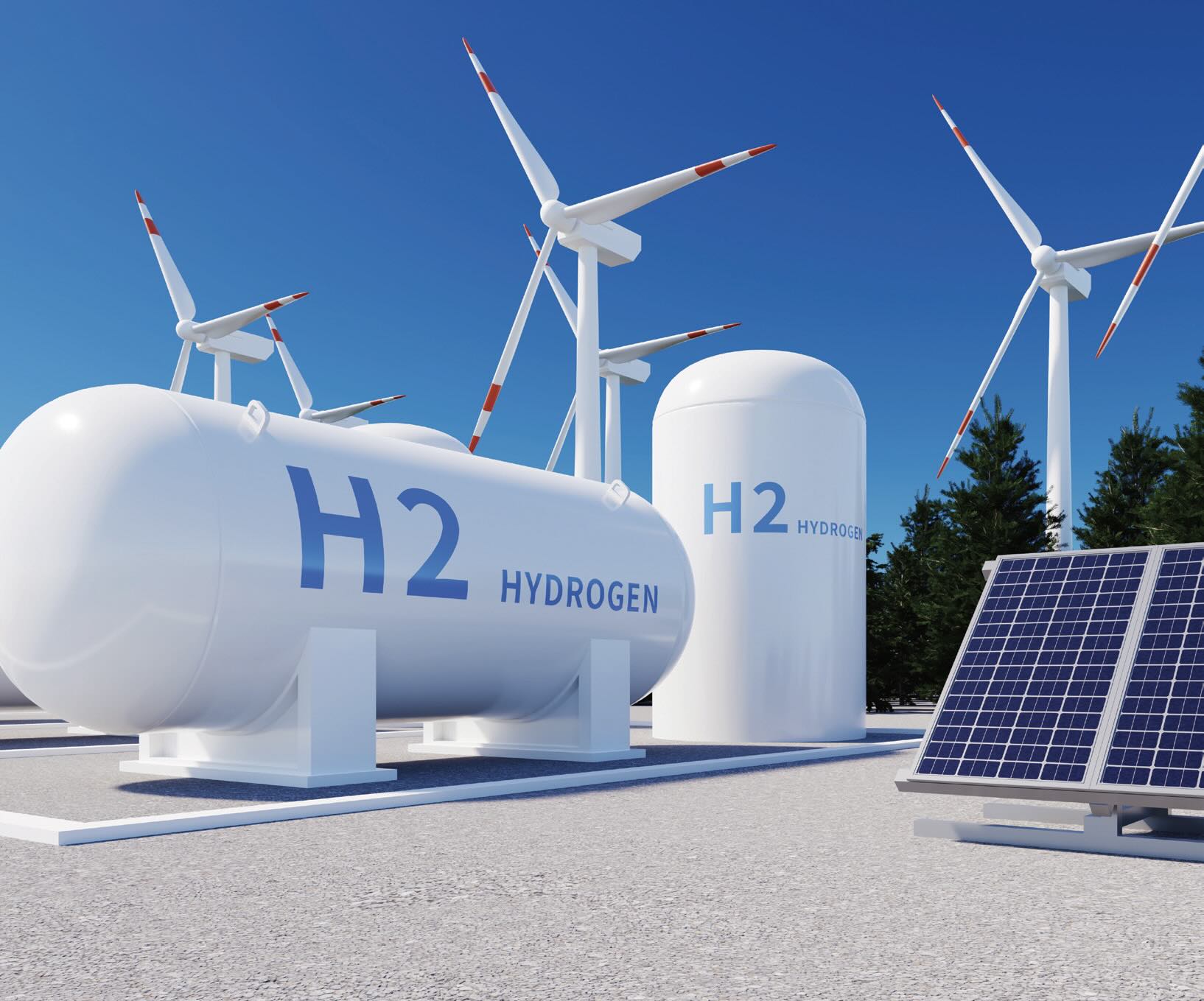Hydrogen
By Don Smolenski, Contributing Editor | TLT Machinery August 2024
Hydrogen looks to be a major player in the energy sector.

Hydrogen is the most abundant chemical element in the universe and is highly reactive. It will have an essential role in decarbonizing the economy. A significant amount of energy supplied either by heat or electricity is needed, however, to break down a molecule to get pure hydrogen. Hydrogen (H
2) as a fuel is classified into different colors depending on the initial molecule being broken down, the energy source used to make hydrogen from it and the byproducts of the chemical reaction.
1
•
Gray hydrogen is produced using the steam-methane reforming (SMR), where high-temperature steam is reacted with methane (CH
4) in the presence of a catalyst under pressure to create hydrogen and carbon monoxide (CO), which is reacted with water to create more hydrogen and carbon dioxide (CO
2).
2 The SMR process produces 95% of hydrogen in the U.S. Carbon dioxide and carbon monoxide are typical byproducts of these processes and may be released into the atmosphere.
•
Black and brown hydrogen are similar to gray hydrogen but are made from coal. If lignin coal is used, it is brown hydrogen. If bituminous coal is used, it is black hydrogen.
•
Blue hydrogen uses natural gas as a feedstock much like gray hydrogen but captures and sequesters the CO
2 byproducts. This process has not been validated at high carbon capture rates, however. In addition, one could ask if sequestering is potentially postponing the inevitable.
•
Turquoise hydrogen also is produced using natural gas as a feedstock. However, in contrast to blue hydrogen, it does not produce carbon dioxide, but rather solid carbon. Solid carbon can be disposed of or reused in plastics, construction material, tires or other products.
1
•
Green hydrogen considers that we must take into account the other half of the equation. Emissions associated with extracting coal or fracking natural gas, for instance, and ultimately processing these fuels are considerable. This would significantly affect the lifecycle carbon footprint of these fuels. Green hydrogen uses renewable energy sources, such as solar, wind, geothermal, etc., to split the oxygen (O
2), a byproduct, from hydrogen in water molecules.
•
Pink hydrogen is a variation of green hydrogen, where nuclear energy is used to provide the power.
It’s likely that achieving decarbonization will require several fuel sources. One factor in favor of hydrogen is that it will likely be compatible with any technology using the existing natural gas infrastructure. This could facilitate hydrogen use more quickly and cheaply than other technologies.
Just as carbon is the building block of the fossil fuel economy, hydrogen will be the building block of the clean energy economy. Hydrogen demand should double by 2030 and reach $1.5 trillion by 2050.
3
Now that I have laid the groundwork, I’ll discuss using hydrogen as an automotive fuel in a future column.
REFERENCES
1.
Blank, T. K., Molloy, P., Ramirez, K., Wall, A. and Weiss, T. (April 13, 2022), “Clean energy 101: The colors of hydrogen,” Rocky Mountain Institute. Available at
https://rmi.org/clean-energy-101-hydrogen.
2.
McDonnell, C. (Feb. 22, 2023), “What’s up with hydrogen?” Fresh Energy. Available at
https://fresh-energy.org/whats-up-with-hydrogen.
3.
ExxonMobil (Aug. 24, 2022), “8 things you didn’t know about hydrogen.” Available at
https://corporate.exxonmobil.com.
Don Smolenski is president of his own consultancy, Strategic Management of Oil, LLC, in St. Clair Shores, Mich. You can reach him at donald.smolenski@gmail.com.